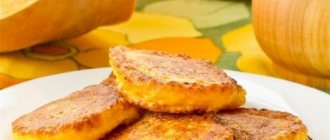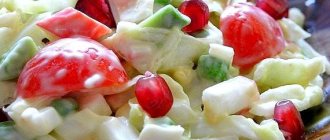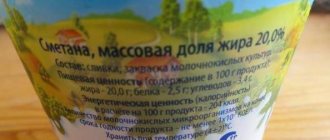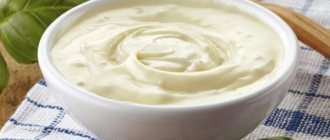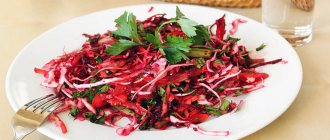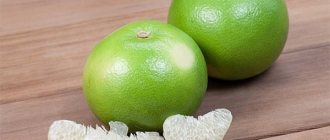Is it possible to prepare horseradish without vinegar for the winter at home?
You can prepare horseradish without vinegar at home in 3 ways:
- In its pure form without additives.
- With additional ingredients (cabbage, beet juice, tomatoes).
- Fermentation with spices.
We will describe the cooking technique and recipe below.
To keep the spicy seasoning for a long time, acid is added to it. Discover an alternative recipe for making horseradish with vinegar for the winter. This preparation is in no way inferior in taste.
Tomatoes
Gorloder is most often prepared from fleshy red tomatoes, which give the necessary consistency and taste to this sauce. Watery vegetables will have to be boiled longer, or excess juice will have to be drained from the puree. Unripe fruits are also used for preparation, but in this case the sauce will be less sweet and not as bright as from ripe tomatoes. The main thing is that the tomatoes must be fresh, without cracks or signs of rot.
We suggest you familiarize yourself with Home flower with purple leaves name
How to cook horseradish without vinegar
Author's note
Agapov Vladislav
Take roots for harvesting 2-3 years before frost. You can dig it up in the spring, if the leaves have not hatched - the useful substances go into the ground.
Grind the dug up root using:
- Medium grater.
- Meat grinders with fine grates.
- Blender.
Author's note
Agapov Vladislav
Use gloves to clean the roots. To avoid burning your eyes, put glasses or a bag over the neck of the meat grinder.
How to prepare horseradish
Beginners need to know that horseradish essential oils have a pungent odor.
Let us describe the procedure for preparing roots for winter twisting.
Step-by-step instructions with photos
Look at the preparation rules for winter twists.
- Soak the limp roots in water for 30-45 minutes.
- Rinse the roots under the tap.
- Peel with a paring knife.
- Cut into pieces, see 4.
- Grind with a meat grinder.
See the photo for how to properly peel and cut the roots.
Slicing requires a knife and cutting board
There is an option for preparing grated horseradish for the winter without vinegar. Read which grater is best to use and select the right ingredients.
Useful tips
This method will help you not to cry during the process of grinding horseradish: when the meat grinder comes out, pull a plastic bag and pour the processed product from it into a container.
Broccoli preparations: a variety of recipes
If root vegetables have lost their freshness, soak them for a day in cold water, this will restore the roots’ juiciness.
Horseradish is easier to grate if you freeze it first.
It is advisable to use gloves when cleaning this plant, otherwise you may get minor burns.
When pickling horseradish roots, you can add various spices and dry herbs to the marinade.
Preparing horseradish for the winter is not at all difficult, and such a piquant and spicy preservation will add a unique taste to baked meat and fish and will be an excellent dressing for any salad.
Before you decide to harvest rhizomes for the winter, you should familiarize yourself with the properties of the plant. To whom is it useful and to whom is it harmful? Only then make a decision about storing it for future use.
Pros:
- reduces food fermentation in the intestines;
- removes mucus from the lungs;
- has choleretic properties;
- relieves symptoms of diabetes;
- resists urolithiasis;
- reduces gum bleeding;
- used to prevent oral diseases;
- fights parasites;
- removes excess fluid from the body;
- reduces swelling;
- treats sprains;
- relieves muscle soreness;
- eliminates boils, mastitis and inflammation;
- normalizes blood pressure;
- fights colds;
- reduces inflammation in the ears;
- helps increase potency;
- acts as a local anesthetic.
In addition to these advantages, the plant has other beneficial properties, so the degree of benefit cannot be overestimated. But do not forget about contraindications or harm from consuming horseradish.
Before use, you should consult with your doctor, especially if you have chronic diseases of the kidneys, liver and gastrointestinal tract.
Minuses:
- Negative effects on the mucous membrane.
- In large quantities, it causes a burn at the site to which it was applied; when ingested, it causes an increase in blood pressure and bleeding.
- Not recommended for use by people with gastrointestinal diseases.
- Not for use by children under 8 years of age, pregnant or nursing mothers.
- Use with caution in women during menstruation.
Everything is good in moderation, therefore, when self-medicating, you should be very careful so that, instead of benefiting, it does not cause deterioration. It's better to consult a doctor.
The plant is rich in vitamin C, enzymes and mineral salts. The healing properties of horseradish have long been used in folk medicine in the treatment of gastrointestinal and colds, as well as in inflammatory processes. You can replace mustard plasters with grated horseradish. Horseradish is a good antiscorbutic remedy.
To prevent food spoilage, they are sprinkled with chopped horseradish rhizomes.
Mustard glycoside gives it a pungent taste. The roots are mainly eaten - in raw, boiled and canned forms.
Leaves are added when pickling and canning other vegetables. Horseradish is an indispensable seasoning for cold meat, jelly and jellied fish.
Classic recipe for preparing horseradish without vinegar
A delicious recipe for the winter without additives.
Ingredients:
- peeled roots - 1.5 kg;
- salt – 1 tbsp. l.;
- sugar – 2 tbsp. l.;
- lemon juice – 1.5 tsp.
Instructions:
- Scald jars with lids with boiling water.
- Grind the roots.
- Mix with remaining ingredients.
- Place in containers.
- The pickling is stored in a cool place.
Calories:
per 100 g – 56 Kcal.
Do you prepare horseradish without vinegar?
Not really
How to preserve horseradish so it doesn't go sour
Ingredients:
- 1 kg horseradish;
- 30 g salt;
- 30 g granulated sugar;
- 1 glass of 9% table vinegar;
- 2 glasses of water.
Preparation
Peel the roots using a knife or vegetable peeler. Then rinse with cold water.
To make the marinade, you need to boil water, add salt and sugar to it. Mix everything and immediately remove from the burner. After this, pour in the required amount of vinegar.
We must sterilize glass jars and metal lids using any usual method.
Grind the horseradish on a grater. To protect your skin and eyes, use gloves, a mask and goggles.
Pour the grated roots with brine and stir until smooth.
Distribute the hot seasoning into prepared glass jars.
We invite you to familiarize yourself with the joint keeping of chickens and turkeys and the rules
To prevent the workpiece from turning sour after a few days, it must be sterilized for 20 minutes in a pan of boiling water.
After this, screw the lids on the jars. When the snack has cooled, put it in a cool place.
To do this, perform the following steps:
- We thoroughly wash the root vegetables and cut them into thin slices;
- Place parchment paper on a baking sheet and distribute the horseradish;
- Dry the roots in the oven at 50 degrees;
- At the next stage, grind the product in a coffee grinder.
If you store ground dried horseradish in a plastic or glass container, it will not expire not only until spring, but for two years.
To begin, the roots need to be soaked in cold water for 2-3 hours. Then we clear them of the top layer and immediately place them in a basin of water so that it does not fizzle out and does not irritate the eyes so much.
Make sure to dry the horseradish. Place the product tightly in bags or plastic containers. Place in the freezer. In this form it can be stored for one year.
A very tasty appetizer of horseradish and cucumbers without vinegar
Cook with cucumbers for a delicious appetizer.
Ingredients:
- cucumbers – 0.7 kg;
- salt – 1 tbsp. l.;
- sugar – 2 tbsp. l.;
- peeled horseradish roots – 0.7 kg;
- 0.5 tsp. lemons;
- water – 0.5 l.
Instructions:
- Boil the brine (water, granulated sugar, salt, acid).
- Rinse the jars and scald them.
- Rinse the cucumbers and toss with horseradish.
- Place in containers.
- Fill with brine.
- Sterilize for 10 minutes.
- Store in a dark place.
Calories:
per 100 g – 56 Kcal.
If you don’t have horseradish, adjika from zucchini for the winter with vinegar will be no less tasty. Be sure to try it and write the recipe down in your notebook.
Horseradish with paprika with sterilization
A dish with such an unusual name as horseradish cannot fail to interest, although in fact, everything is very simple - its main ingredient is horseradish - hence the “telling” name. The remaining components can vary depending on the tastes and preferences of the person preparing it.
And the technology for preparing horseradish itself can vary significantly. Most often, there are recipes for horseradish made from fresh vegetables without heat treatment, in order to preserve all the vitamins and nutrients as much as possible, especially for the winter. But such a snack is best stored in a refrigerator or cellar.
Many people store horseradish on the balcony in winter, at sub-zero temperatures, since freezing does not impair the taste or nutritional qualities of the horseradish. Sometimes horseradish is prepared with the addition of vinegar or vegetable oil, which allows it to be stored in more gentle conditions and prepared for the winter, without necessarily using the refrigerator.
There are also recipes for making horseradish for the winter using boiling either all the ingredients or just the tomatoes.
Chrenoder, prepared according to traditional recipes, is not only aromatic and tasty, but can also bring significant health benefits. Horseradish alone is superior in its rich mineral and vitamin composition (especially vitamin C content) to many vegetables and fruits, second only to black currants and rose hips.
Attention! Japanese scientists have found that horseradish can resist the development of caries, so horseradish can help preserve teeth.
But for pregnant women and people with kidney inflammation and chronic gastritis, the use of chrenoder is extremely undesirable.
The calorie content of horseradish, as one of the main components of horseradish, is about 56 kcal per 100 g of product. The calorie content of horseradish depends on the specific recipe and can be even less if you do not add vegetable oils and other nutritious ingredients to it.
Ground paprika will help add pleasant sweetness and a bright red color to the fiery snack. This is an excellent alternative to fresh bell pepper, which may not be available at the time of preparing the hot seasoning.
Compound:
- 4 kg of tomatoes;
- 4 tbsp. paprika;
- 4 tbsp. chopped horseradish;
- 6 cloves of garlic;
- 1 tbsp. l. salt;
- 1 tbsp. l. Sahara;
- 2 tbsp. l. vegetable oil.
Squeeze tomato juice from the original amount of tomatoes. Pour into a saucepan and bring to a boil. After 5 minutes from the moment of boiling, add paprika, salt and granulated sugar. Add chopped roots and finely chopped garlic. Pour in vegetable oil and mix thoroughly. Place the mixture in small clean jars and sterilize over medium heat for at least 10-15 minutes. Roll up the finished snack with lids, cool and store in a cool place.
It is most convenient to use jars with a volume of up to 0.5 liters for twisting, so that the open preparation with tomatoes and garlic does not sour.
Another recipe for horseradish for the winter, which helps cover the sauce according to the principle of preparing raw tomato. To prepare 10 liters of tomato, you will need one heaped tablespoon of salicylic acid, a pharmaceutical preparation. Add salt, garlic and horseradish to taste. Everything dissolves in tomato juice.
There is a method for preparing horseradish for the winter so that it does not lose its pungency and pungency. For this purpose, many, contrary to the standard recipe, add a little more horseradish and garlic to the winter version. A well-proven method is freezing seasonings in small plastic bottles.
Useful tips
Preparing a horseradish snack requires not only adherence to technology and the use of quality ingredients. It is important to observe certain points that can affect the quality and significantly facilitate the cooking process.
The horseradish roots that will be used for cooking should be taken young, light in color and not loose.
The utensils for preparing horseradish must be washed and doused with boiling water. The same applies to a food processor and meat grinder.
If you prepare horseradish at home, and not at the dacha, where there is a limited number of kitchen utensils, you can grind all the ingredients not in a meat grinder, but in a food processor, using the finest grater.
If you are not confident in the effective storage of the finished product, it is better to pour two tablespoons of calcined sunflower oil on top of the jar with horseradish.
We suggest you read: How to dilute grape juice with water for wine
Experienced cooks freeze horseradish seasoning in the freezer in small, disposable portions. This is a very convenient storage method - you don’t need to clutter the refrigerator with jars and you don’t have to worry about the product going sour.
If you use a meat grinder, the horseradish needs to be turned last - it clogs the grate. Garlic can be crushed in a garlic press. The skin of the tomatoes is not noticeable in the finished seasoning, so you don’t have to remove it.
To prevent horseradish from souring, it must be stored in a cool place. It can also turn sour if the proportions are not met - not enough salt or horseradish is added. Any uneaten seasoning should be put into the refrigerator immediately after eating. The longer it sits open, the more likely it is to go sour. The reason for the souring of the product may be the expiration of its shelf life.
The unpleasant smell of ground horseradish is considered to be an unpleasant moment in preparing the dish. In order to eliminate it, put a plastic bag on the meat grinder and tie it at the base with a rope or elastic band.
Chronoder is afraid of constant temperature changes, so to store it you need to choose a place where the temperature is constant - a refrigerator, a deep cellar or a cold basement.
To prevent the hot sauce from drying out over time, when preparing it for the winter, add 50 g more horseradish and garlic to those portions that are planned to be eaten closer to spring.
Having prepared this excellent dish at least once, housewives will want to please their loved ones with it on weekdays and on holidays. With it, familiar meat can turn into a real culinary masterpiece, and a simple lunch into a holiday. To ensure that the feeling of this holiday never leaves the family, this wonderful-tasting and very healthy seasoning should always be on hand. For unexpected guests, this is a handy lifesaver. Healthy and tasty dishes help not only improve your mood, but also improve your health.
Attention!
Horseradish recipe for the winter without vinegar and citric acid
Without adding acid, easily cook with apples according to the suggested recipe.
Ingredients (for 300 ml water):
- 0.5 tbsp. l. salt;
- 1 tbsp. l. Sahara;
- 0.5 kg of peeled apples and horseradish root.
Instructions:
- Rinse the containers and boil the lids.
- Boil the brine with salt and sugar.
- Blend the roots and apples with a blender (remove the core from the apples).
- Place the pulp into jars.
- Fill with brine, sterilize in a pan with water for 7 minutes.
Calories:
per 100 g – 64 Kcal.
Watch a video of making apple sauce for meat.
The benefits of horseradish for the human body
Horseradish root is valuable for its healing properties. It includes:
- Vitamin C;
- B vitamins;
- Vitamin PP;
- Ascorbic acid;
- Mustard oils;
- Phytoncides;
- Starch;
- Cellulose;
- Micro- and macroelements.
Horseradish root - a medicine replacement:
It owes its exceptional healing and nutritional qualities to the active components that make up its composition. Compared to lemon, the root vegetable has a significantly higher vitamin C content. Ascorbic acid, resinous substances, mustard oils have a healing effect on the human body, help stimulate the functioning of internal organs and are a preventive measure for various diseases.
Positive effect on the body:
- Has a stimulating effect and has a beneficial effect on the gastrointestinal tract;
- Helps with hypertension, osteochondrosis, pneumonia, physical and mental exhaustion of the body;
- Known for its general strengthening effect, it helps to increase strength, stimulate physical activity and helps in the fight against depression;
- Has anti-inflammatory and bactericidal properties;
- It has a choleretic, expectorant, diuretic and hematopoietic effect;
- It is a powerful natural antibiotic, it helps in the treatment of colds and infectious diseases of the respiratory tract;
- Removes stones, relieves cystitis, dropsy, infections and inflammations in the urinary tract;
- It is an indispensable remedy for vitamin deficiencies, especially in the spring;
- Used in the treatment of male impotence. Its constant consumption in small quantities can improve male performance. Like an aphrodisiac, it has a stimulating effect;
- Helps reduce excess weight;
- Prevents constipation and also prevents the formation of toxins.
Video about horseradish hair mask:
How to ferment horseradish with cabbage
Prepare sauerkraut with cabbage for the winter - a delicious winter snack.
Ingredients:
- salt – 25 g;
- sugar – 30 g;
- cabbage – 1 kg;
- water – 500 ml;
- garlic – 3 cloves;
- beets – 1 pc. (optional);
- grated horseradish roots - 2 tbsp. l.
Instructions:
- Grate horseradish.
- Cut the cabbage into 8 pieces, without the stalk.
- Peel the garlic, cut into slices.
- Peel the beets and cut into cubes.
- Place the cabbage in an enamel pan.
- Sprinkle with garlic and beets.
- Boil malt with water, salt and sugar.
- Fill with cold brine and place under pressure.
- Leave it in the room.
- After 4-5 days, sauerkraut with horseradish is ready.
- Bon appetit!
Calories:
per 100 g – 26 Kcal.
We suggest you see how to prepare horseradish roots pickled with cabbage.
Horseradish with garlic and tomatoes (“Hrenoder”)
This Siberian seasoning has many names that speak for themselves: “Gorloder”, “Cobra”, “Ogonyok” or “Hrenoder”. The composition of the ingredients is always identical, only the proportions may differ.
Compound:
- horseradish – 1 kg;
- tomatoes – 1 kg;
- garlic – 3 cloves;
- sugar – 40 g;
- salt – 20 g.
- Wash the tomatoes, pour boiling water over them, peel and cut into 4 parts.
- Peel the soaked roll and cut into small pieces.
- Peel the garlic and pass through a press.
- Prepare the meat grinder by attaching a thick plastic bag to it.
- Place several pieces of horseradish and tomatoes into the meat grinder one at a time and crank them until you run out. If the bag becomes full early, change it and then mix the contents of both bags.
- Add salt, sugar, garlic to the tomato-horseradish mixture and stir well.
- Place in clean, dry jars, roll them up or screw on the lids. Put it in the refrigerator for the winter.
If stored in the refrigerator, homemade Chrenoder will easily last for 9 months; if you manage to eat it in six months, even better. The snack turns out to be spicy, juicy and very healthy.
How to cold pickle horseradish in jars for the winter
You can pickle horseradish for the winter without vinegar without heat treatment.
Ingredients:
- beet juice – 100 ml;
- grated horseradish – 0.5 kg;
- salt – 1 tsp;
- sugar – 1 tbsp. l.;
- lemon juice – 2 tbsp. l.;
- liquid 300 ml.
Instructions:
- Mix ingredients in a bowl.
- Place tightly into jars.
- Screw it on.
- Store in a cool place.
Calories:
per 100 g – 56 Kcal.
Salt horseradish cold for the winter?
Not really
Features of preparation and storage
- Time: 30 minutes.
- Number of servings: 9-10 persons.
- Calorie content of the dish: 30 kcal.
- Purpose: for a snack.
- Cuisine: Russian.
- Difficulty of preparation: easy.
The spicy root has a large supply of useful substances, has a tart taste, and is in demand among consumers. The classic recipe for horseradish with lemon will help the housewife make a simple, tasty and aromatic snack. The dish, supplemented with spice, becomes spicy and piquant. The spicy additive can be stored for up to 4 months, but experts recommend eating it earlier so that the spice does not lose its properties.
Ingredients:
- lemon juice – 20 ml;
- water – 250 ml;
- horseradish – 1000 g;
- granulated sugar – 50 g;
- salt – 1 tbsp. l.
Cooking method:
- Peel the roots and grind in a blender or meat grinder. In the second case, place a bag over the neck of the device to protect your eyes.
- Add salt and sugar to the resulting slurry and mix.
- The water needs to be boiled. Pour the hot liquid over the mixture, mixing again.
- Sterilize storage jars, place seasoning and a little lemon juice in them. Close the containers tightly with lids and place in the refrigerator.
- Time: 30 minutes.
- Number of servings: for 8-10 cans.
- Calorie content of the dish: 43 kcal.
- Purpose: for a snack.
- Cuisine: Russian.
- Difficulty of preparation: easy.
Adding vinegar or citric acid will help preserve horseradish for the winter. It should be preserved in sterilized jars. Store in a dark, cool place. If these conditions are met, you will receive an aromatic, spicy and tasty dressing for dishes, which can be used instead of mustard or wasabi. Homemade seasoning will add piquancy to any dish and make the taste more interesting.
Ingredients:
- citric acid – 20 mg;
- rhizomes – 1 kg;
- salt – 1 tbsp. l.;
- granulated sugar – 1 tbsp. l.;
- water – 250 ml.
- Peel the roots and soak them in water for a day. Grind using a meat grinder or blender.
- Boil water, add salt and sugar, dissolve. Remove from heat, add citric acid.
- Pour finely chopped horseradish with the resulting brine, stir, cover for a few minutes.
- Place the resulting dish in sterile jars. Try to do this quickly so that the spice does not lose its aroma. Close tightly and store.
- Time: 1 hour 20 minutes.
- Number of servings: 5-7 persons.
- Calorie content of the dish: 56 kcal.
- Purpose: snack/condiment.
- Cuisine: Russian.
- Difficulty of preparation: easy.
We invite you to familiarize yourself with Food Storage. Ways to properly store food. Table: storage conditions and periods
Horseradish products are deservedly popular on the Russian table. This seasoning is healthy, has a specific aroma, and is indispensable for meat dishes. Making sauce with beets at home will help slightly soften the taste of the main component. Preparing the dressing is not difficult. A step-by-step recipe with photos will help you make the famous additive correctly.
Ingredients:
- vinegar (9%) – 2 tbsp. l.;
- granulated sugar – 1 tbsp. l.;
- beets – 100 g;
- horseradish – 200 g;
- water – 0.2 l;
- salt – 1 tsp.
- You need to start the cooking process by creating a marinade. Mix sugar, salt and vinegar in water. Place the contents of the pan on the fire, boil and cool.
- Beets need to be peeled and grated on a fine grater.
- The roots (one large horseradish) should be peeled and chopped using a blender or grater.
- Mix the prepared ingredients, pour warm marinade. Place into sterile containers and close. After waiting for the preserved food to cool, store it in the refrigerator.
- Time: half an hour.
- Number of servings: 10-15 persons.
- Calorie content of the dish: 43 kcal.
- Purpose: snack/condiment
- Cuisine: Russian.
- Difficulty of preparation: easy.
Horseradish with vinegar is a godsend for those who want to preserve the seasoning for the winter. Acidic liquids are an excellent preservative. Adding sugar and salt will help make the product taste brighter. The sauce is suitable for adding spiciness, piquancy and aroma to other dishes. The use of the spice is recommended during the cold season: recovery will be faster due to its warming and antibacterial properties.
Ingredients:
- horseradish – 0.5 kg;
- boiled water – 1 tbsp.;
- sugar – 3 tbsp. spoons;
- vinegar (5%) – 1 tbsp.;
- salt – 2 tsp.
- Rinse the rhizomes, peel them, and pass through a fine grater.
- Add vinegar, salt, water and sugar to the resulting mass.
- Place the prepared horseradish into jars, close tightly, leave for 2-3 days, then put in the refrigerator.
To ensure you get a delicious horseradish seasoning, you should follow some recommendations:
- You need to prepare horseradish for food in September, selecting rhizomes 3-6 cm in diameter and 30-50 cm long.
- Do not make a lot of preparations at once, as the plant will lose its pungency in a month.
- The whole root can be stored in the refrigerator for about six months and used as needed.
- If you decide to pickle the spice some time after extracting it from the ground, keep it in water before preparing the seasoning. This will help restore lost moisture to the roots.
- After processing, horseradish must be stored in sterilized jars under an airtight lid.
- The discharge that appears when grinding horseradish root irritates the mucous membranes. To protect yourself from this phenomenon, place the product in the freezer for a couple of hours. If the recipe requires twisting it, secure a plastic bag to the neck of the meat grinder. Using a closed blender can relieve you from the pain in your eyes.
- You can avoid damage to the skin if you wear gloves.
- To prevent the horseradish mass from darkening after production or during the preparation of the component, you can sprinkle it with a little juice squeezed from lemon.
- The ready-made dressing is ideal for cold appetizers, meat and fish dishes. You can use horseradish to dress salads to give them a spicy kick.
- To get a real Russian seasoning, do not use vinegar, as its sourish taste drowns out the original aroma of the spice. Since ancient times, horseradish dressing was prepared immediately before serving the dish so that guests could enjoy the pungent taste to the fullest.
To prepare the root for culinary purposes, no skill or experience is required. You will need a minimum of time and effort. Therefore, you should not be afraid that you will not be able to cook it.
Ingredients:
- 130 g horseradish;
- 2 tsp 9% table vinegar;
- ½ tsp table salt;
- 1 tsp white sugar;
- 200 ml water.
Preparation
First, the root needs to be cleared of the top layer. This should be done with gloves to avoid burns. Then we wash it, cut it into small pieces and put it in a blender.
Add all the specified ingredients and boiled chilled water to it. Grind for one minute at maximum speed.
We send the ground mass into a clean and sterile jar. Screw on the metal lid.
Store in a cool place. This appetizer perfectly complements baked fish, meat, and salads.
If you don't have the time or desire to jar the spicy ingredient. Then you can save it with whole roots. And when you need it, use it to add to cold or meat dishes.
First, you need to clean the roots from the soil, rinse them under cool water and wait until they are completely dry. Place horseradish in 10 pieces, 30 cm long, in plastic bags. Cling film will also work. We make several holes in the packaging and place it in the vegetable compartment in the refrigerator. This method allows you to store the product for one month.
But there is an option that allows you to increase the shelf life to three months. To do this, the roots should be placed in an airtight plastic container.
If you peel the product, it will no longer be suitable for consumption within a couple of weeks.
Men especially like this winter seasoning. If family members do not have any stomach problems and they like dishes with a spicy taste, then be sure to prepare this seasoning.
Ingredients:
- 130 g horseradish;
- 1 beet head;
- 1 tsp sugar;
- ½ tsp salt;
- 2 tbsp 9% vinegar.
Preparation
Peel the roots and cut into medium-sized pieces.
If horseradish has lost its freshness, you can restore its juiciness by soaking it in cold water for one day.
Now you need to twist the root through a meat grinder. To protect your eyes, we attach bags to the spinneret. Close the package and put it away for a while.
We grind fresh beets through a meat grinder, and then squeeze out the juice through cheesecloth. If it turns out to be less than 200 ml, then add a little water.
Add all the specified ingredients to the juice and mix it with chopped horseradish root.
We transfer the spicy snack to a jar, which must first be sterilized. Screw on the boiled lids.
We send the workpiece to the refrigerator or cool cellar. Bon appetit!
If you want the roots not to lose their taste and pungency, then it should be prepared for the winter without adding any spices or preservatives.
We clean the roots and rinse them with cold water, place them on a towel until completely dry. Then cut into small pieces to make it easier to chop.
Place the horseradish in a blender and grind. We should end up with a mass that resembles gruel.
Distribute the resulting mass into plastic bags. If desired, add specific amounts of horseradish to make it easier to use during cooking.
Place the filled bags in the freezer for storage.
The product prepared in this way can be stored until late spring. At the same time, vitamins and nutrients are preserved.
Consider a traditional recipe for making spicy seasoning. We will use beets as the second main ingredient. But it is needed not to improve taste, but for color.
Ingredients:
- 500 g horseradish root;
- 150 g boiled beets;
- Table salt according to preference.
Preparation
Remove the top layer from the roots and be sure to rinse with cold water. If the horseradish is soft, then soak it for 12-24 hours.
To protect the mucous membrane of the eyes from horseradish, we put a plastic bag over a meat grinder and twist the roots, preferably twice. You can use a blender for the same purposes.
Grind the boiled beets on a fine grater and mix with the horseradish mixture. Salt to taste and distribute into dry and sterile jars.
We put it in the refrigerator or cellar. This preserve can be used to make hot sauces or add directly to dishes.
- Ingredients - 400-600 grams of horseradish roots.
- Marinade (brine) - 400-600 ml water, 40-60 ml (3-4 tablespoons) 9% table vinegar or 60-90 ml 6% (5-6 tablespoons), 20-30 grams of salt (2 -3 heaped teaspoons), 20-30 grams of sugar (3-4 heaped teaspoons).
We suggest you familiarize yourself with Methods of dealing with house ants
Raw adjika with horseradish without vinegar
Adjika sauce is a good cure for colds in winter. Prepare according to the recipe.
When grinding, horseradish roots release burning oils, take care of your eyes.
Attach the bag to the neck of the meat grinder with a rubber band.
Ingredients:
- fresh tomatoes – 1 kg;
- ground roots - a glass;
- table salt – 1 tbsp. l.;
- hot pepper – 2 pcs.
Instructions:
- Rinse the vegetables.
- Pass through a meat grinder.
- Mix the ingredients.
- Distribute into jars.
- Store in the refrigerator.
Calories:
per 100 g – 37 Kcal.
It is better to pour raw horseradish into small containers.
Cooking adjika with horseradish and garlic without cooking
Prepare spicy horseradish for meat with garlic.
Ingredients:
- tomatoes – 1.5 kg;
- twisted roots - 250 g;
- head of garlic;
- salt - to taste;
- chili pepper – 2 pcs.
Instructions:
- Peel the garlic and pepper.
- Wash the tomatoes, remove the stem.
- Grind the ingredients in a blender.
- Mix with horseradish and salt.
- Pour into containers, close with lids.
- Place in the refrigerator.
Calories:
per 100 g – 48 Kcal.
If you don’t want to combine horseradish, try the classic tomato and garlic adjika recipe. This is a moderately spicy and very tasty seasoning.
Recipe for boiled adjika from tomatoes with horseradish without vinegar
The taste of boiled adjika differs from that prepared without cooking.
Ingredients:
- tomato – 1 kg;
- grated horseradish roots – 200 g;
- salt – 1 tbsp. l.;
- ground hot pepper – 1 tbsp. l.;
- garlic - head.
Instructions:
- Rinse and twist the tomatoes.
- Boil for 15 minutes.
- Squeeze the garlic into the tomato.
- Add horseradish, pepper, salt.
- Bring to a boil, but do not boil.
- Place into sterile jars.
- Seal tightly with lids.
- Store in a dark place.
Calories:
per 100 g – 50 Kcal.
See how to make Russian wasabi from horseradish leaves.
Vigorous horseradish without vinegar per day
Prepare homemade horseradish without vinegar according to the recipe.
Ingredients:
- horseradish roots - 0.3 kg;
- tomatoes – 200 g;
- salt - a pinch;
- garlic – 2 cloves;
- sugar 1 tsp;
- water – 3 tbsp. l.
Instructions:
- Wash the tomatoes, cut in half.
- Peel the garlic from the skin.
- Grind with garlic in a meat grinder.
- Combine ingredients in a bowl.
- Place immediately into container.
Calories:
per 100 g – 37 Kcal.
Twist and salt the roots - wasabi is ready
You can also make horseradish with vinegar without cooking. If you want to quickly make seasoning this recipe is for you.
Recipe for horseradish with beets without vinegar and sterilization
Horseradish with beets is a flavorful addition to meat dishes.
Ingredients:
- beets – 500 g;
- horseradish – 500 g;
- salt, sugar - to taste.
Instructions:
- Cook the beets.
- Rub with a grater.
- Mix with horseradish.
- Add some salt.
- Add sugar.
- Place into jars.
- Sterilize for 15 minutes.
- Roll up and cool upside down.
- Store in a dark place.
Calories:
per 100 g – 46.8 Kcal.
FAQ
Cook horseradish yourself - I have some questions. We will answer the most common ones.
How to store horseradish without vinegar all winter
It's not difficult to make crap. It is better to store without vinegar in the refrigerator. Place the grated roots in a container with a capacity of 200–300 ml. After opening, essential oils quickly evaporate and the taste changes.
How long does horseradish last without vinegar?
Horseradish is stored in different ways.
See the table for shelf life of root varieties. Table.
| Variety | Storage | Shelf life |
| Fresh | In a refrigerator | no more than a month |
| Ground, hermetically sealed | In a cool, dark place | up to 6 months |
| Boiled | In a dark place | up to 9 months |
What spices are suitable for horseradish without vinegar?
Horseradish is a spicy seasoning. To make it, all you need is pepper, garlic, salt and sugar.
Useful properties of the plant
The valuable qualities of horseradish are based on its rich chemical composition. This plant contains vitamins B, C, E, as well as essential oils, phosphorus, magnesium, potassium, calcium, iron, manganese, copper and fiber. Allyl oil gives the plant its burning properties, which in small doses brings great benefits, but in large quantities this component can cause burns to internal organs. As for vitamin C, which is responsible for immunity, horseradish contains five times more of this substance than citrus fruits. The plant also contains components such as phytoncides, which are responsible for its antibacterial qualities.
We also recommend reading:
Useful properties and recipes based on ginger with honey How to cook delicious horseradish at home Recipes for making horseradish with tomatoes and garlic How to pickle ginger root at home
The root successfully fights the following diseases:
- gout;
- rheumatism;
- radiculitis;
- caries;
- disturbances in the functioning of the stomach and intestines;
- cough and cold;
- skin pathologies;
- liver and bladder diseases.
A very interesting feature of horseradish was discovered by Russian oncologist Dr. Laskin. He claims that to prevent cancer or get rid of existing problems, it is enough to inhale the vapor of the grated root of the plant every day. So is it worth eradicating this most valuable remedy from your garden?


